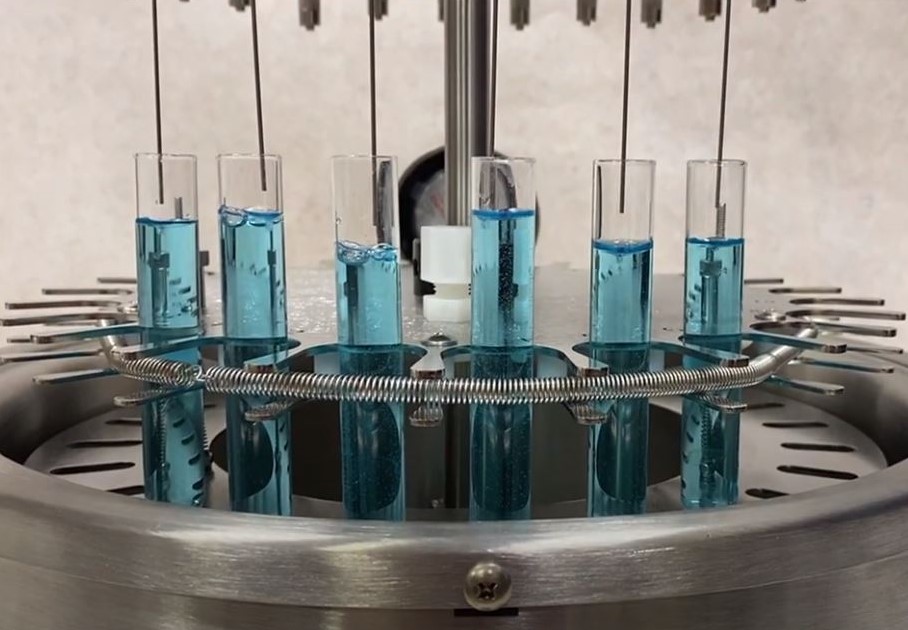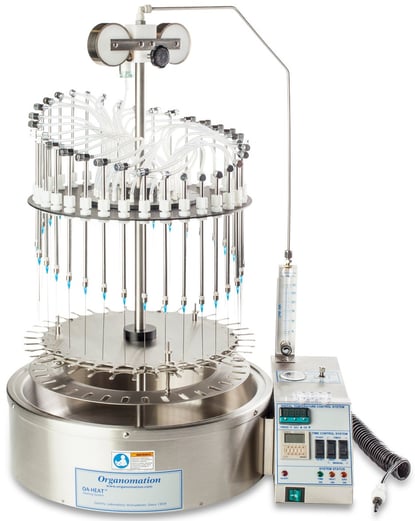
Evaporation to dryness under a gentle stream of nitrogen is a common step in sample preparation, meant to separate a solute from a solution. Typically, a solution is evaporated to dryness before being reconstituted in a different solvent for analysis -- a process often referred to as solvent exchange or solvent swap.
Organomation has been manufacturing laboratory equipment for over 60 years, and continues to be a leading expert within the blowdown evaporation industry. Organomation's nitrogen dryers are designed to make the sample dry down process simple, while minimizing some of the common risks that become especially prominent when evaporating to dryness.
The biggest risk associated with evaporation to dryness is simply over-drying your samples. Over-drying often leads to damaged or deteriorated samples that can cause unreliable test results. There's a fine line between evaporating too little and leaving extra solution behind, and evaporating too much and damaging your samples. If this is a bottleneck in your sample preparation, Organomation's N-EVAP blowdown evaporators can provide a solution.
The ability to keep an eye on your samples during the evaporation process is critical to avoid over-drying. The N-EVAP product line includes a unique spring assisted sample holder which allows the user to have an unobstructed view of the sample's solvent level. At any point during the evaporation process, the sample holder can be raised out of the water bath to check on the remaining sovent, without having to stop the operation.
Gentle Heat and Nitrogen Blowdown
The N-EVAP utilizes a combination of gentle heat and a steady flow of nitrogen gas in order to initiate solvent evaporation. Both features are easily adjustable, giving the user full control over the speed at which concentration occurs. Being able to slow the concentration rate towards the last few mL enhances your ability to remove your samples at just the right time.
Individual Control of Samples
It's often the case that an entire batch of samples won't be evaporated down to dryness at the exact same time. The individual needle valves included on the N-EVAP allow the gas flow to be adjusted per sample position. Gas flow can even be shut off to samples that may have dried faster than others, preventing damage due to over-drying.
Timer Feature
Some of the high capacity sample dryers include digital controls for even more user regulation. Once you've determined the optimum gas/heat settings and the time needed to achieve complete dryness, you can utilize the timer feature to create a semi-unattended operation. The timer will automatically shut both the heat and gas flow off at just the right time, leaving you with peace of mind.
Evaporating to dryness can be tricky, but the N-EVAP Nitrogen Evaporator is designed to make it simple. Learn more about how the N-EVAP is used for PFAS analysis in EPA methods 533 and 537.1. Contact our sales team with any questions, or to discuss the needs of your lab's application.

